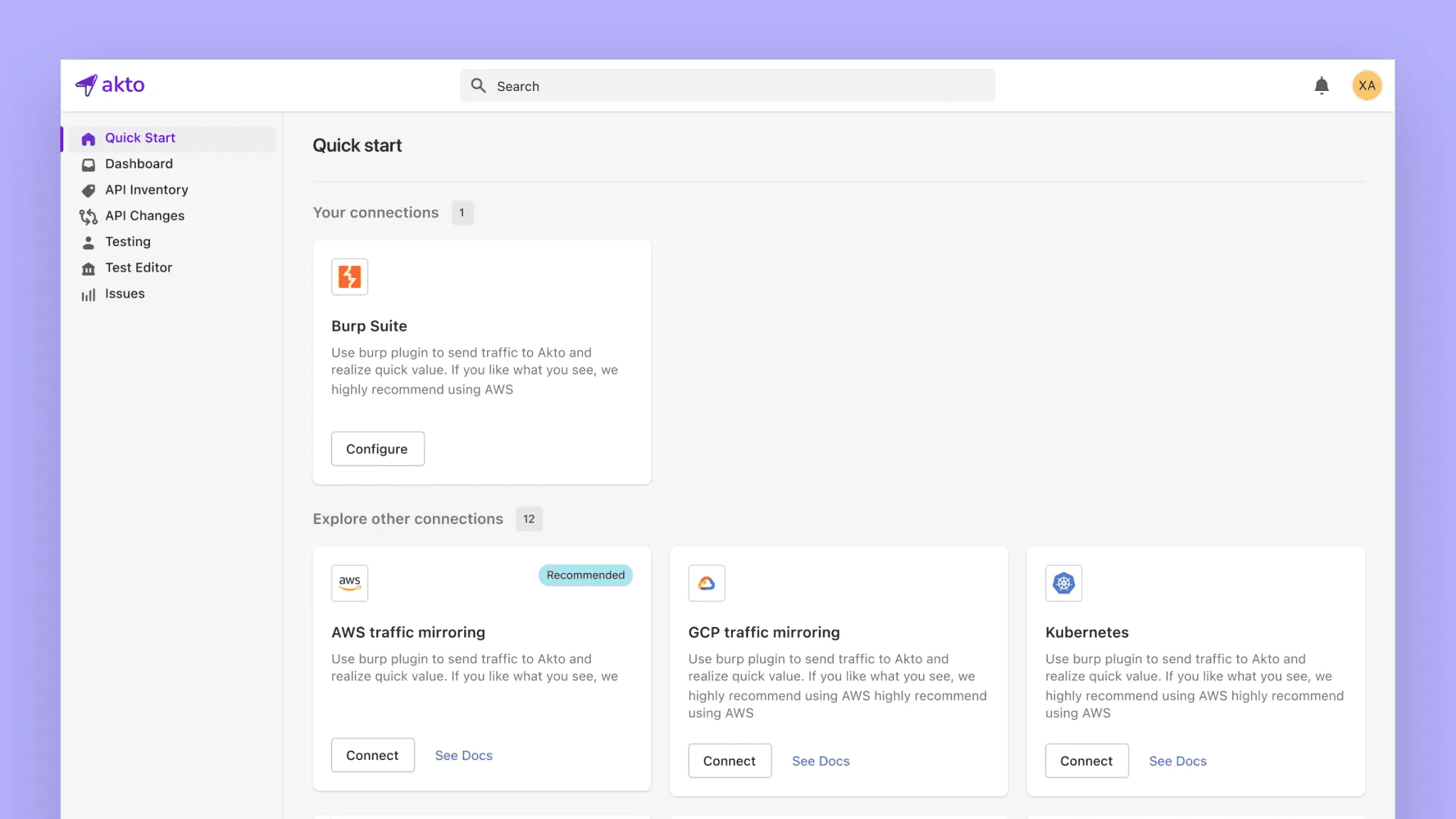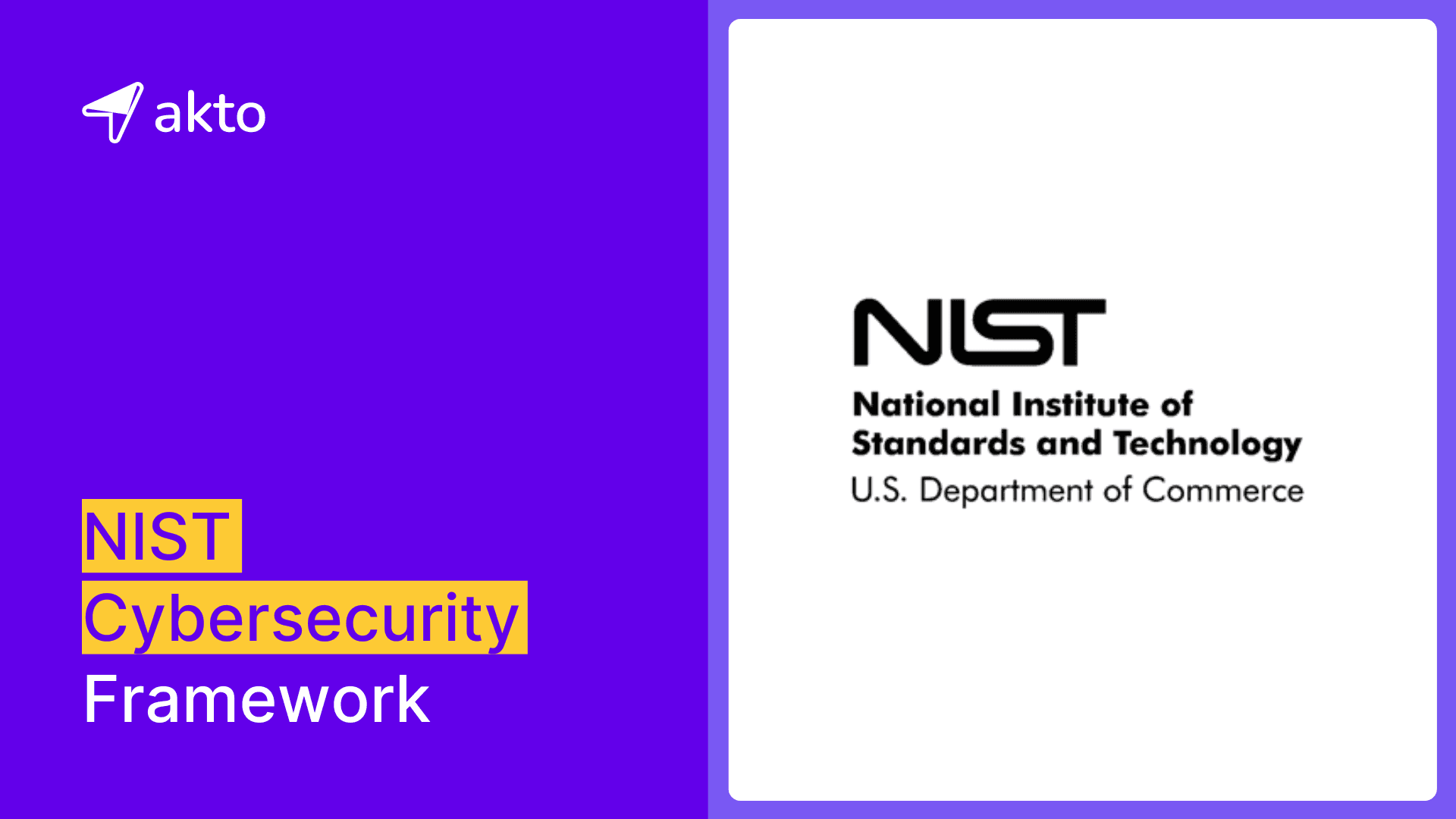42Crunch Alternatives
42Crunch is an API security platform that automates auditing, testing, and protection of APIs.

Insha
Oct 10, 2024
42Crunch automates API security by auditing, testing, and protecting APIs from development to runtime. It ensures API safety by integrating with CI/CD pipelines, enforcing security policies, and using a micro-API firewall for real-time protection. With 42Crunch, organizations can secure APIs while reducing manual security tasks.
In this blog, discover the top alternatives to 42Crunch for API security, comparing features, benefits, and integrations to find the best solution for organizational needs.
What is 42Crunch?

42Crunch is a comprehensive API security platform that helps organizations protect their APIs through automated security testing, real-time monitoring, and policy enforcement. It focuses on securing APIs throughout their lifecycle by offering features like vulnerability assessments, encryption, and authentication. The platform integrates seamlessly into development workflows, ensuring security from design to deployment while reducing risks of data breaches and API threats.
Importance of 42Crunch
The importance of 42Crunch lies in its ability to provide end-to-end API security. It helps organizations by automating the process of vulnerability detection, ensuring to protect APIs from design to deployment.
By offering real-time monitoring and policy enforcement, 42Crunch reduces the risk of API breaches and data exposure. Its seamless integration with development pipelines allows security teams to embed security into the API lifecycle, making it a critical tool for organizations that rely heavily on APIs for their operations.
How 42Crunch Enhances API Security
42Crunch follows a structured approach to ensure security throughout the API lifecycle.
1. API Security by Design
42Crunch starts by analyzing the API design and OpenAPI specifications, detecting security risks early in development. It reviews the API structure and definitions to identify vulnerabilities, helping developers create security policies that align with industry standards, preventing issues before they arise.
2. Detecting Vulnerabilities Automatically
42Crunch then automatically scans the APIs for vulnerabilities like weak authentication or improper data handling. It continuously checks for issues such as broken object-level authorization (BOLA) or data leakage, providing clear steps to fix them and strengthen API security.
3. Monitoring in Real-Time
After deployment, 42Crunch keeps a close watch on API traffic, monitoring for suspicious activity or patterns that may signal an attack. It analyzes and logs every incoming request, alerting security teams instantly to any unusual behavior, ensuring swift action against potential threats.
4. Enforcing Security Policies
As the API operates, 42Crunch enforces the security policies security engineers set during the design phase. It ensures every interaction follows the rules for data validation, access control, and rate limiting, effectively blocking unauthorized access and stopping threats before they cause damage.
5. Seamlessly API Security in DevOps
42Crunch integrates directly with DevOps tools and CI/CD pipelines, embedding security checks throughout the API development process. Automating security testing from design to deployment, it allows security teams to maintain high-security standards without slowing down their workflow, ensuring APIs are secure and development remains efficient.
Limitations of 42Crunch
While 42Crunch is a powerful tool, it does have limitations. One major challenge is its reliance on OpenAPI specifications, which limits its effectiveness when dealing with alternative API formats like GraphQL or SOAP.
This reduces its flexibility for organizations that use a variety of API formats. Additionally, although the platform's comprehensive security checks are thorough, they can slow down the development process if security teams do not properly integrate them into CI/CD workflows.
42Crunch’s automated testing might also miss certain edge cases or highly customized API configurations, requiring manual security reviews to ensure full coverage. The platform is heavily focused on API security, so broader cybersecurity tasks, like network-level threat detection, often need separate tools to handle.
Lastly, 42Crunch has a learning curve that may require additional training for developers who are unfamiliar with the platform, potentially lengthening the implementation timeline.
Criteria for Evaluating 42Crunch Alternatives
When evaluating alternatives to 42Crunch, consider the following key criteria to ensure organizations choose the best API security solution for their needs. These include:
1. Security Features and Capabilities
Assess the depth of the security features that the alternative provides. Look for API vulnerability scanning tools that detect common vulnerabilities like broken authentication or injection attacks. Ensure that organizations implement real-time threat detection capabilities to monitor suspicious activity.
Compliance with OWASP Top 10 is crucial, as it covers the most critical security risks. Advanced features like encryption for data in transit and at rest, along with strong authentication and access control mechanisms, will ensure comprehensive protection for the APIs.
2. Ease of Integration and Use
Evaluate how easily the organization can easily integrate the tool into its existing development and security workflows. It should seamlessly connect with the current systems, such as CI/CD pipelines, and offer integration with popular development environments like GitHub, Jenkins, or Docker.
The tool should also provide a user-friendly interface, ensuring that both developers and security teams can efficiently use it. Plugins or extensions that simplify setup and usage are a strong advantage, reducing friction during the adoption process.
3. Pricing and Licensing Models
Compare the pricing models that the alternatives offer. Look for flexibility in their pricing structures, such as subscription-based models, pay-per-use options, or customized plans that scale according to the organization’s size and needs.
Ensure that the solution provides transparent pricing without hidden fees that could lead to unexpected costs. Assess whether the solution offers a trial or free tier, allowing security engineers to test the platform before committing to a larger financial investment.
4. Customer Support and Documentation
Strong customer support is essential for smooth implementation and use. Look for 24/7 availability through multiple channels, such as email, live chat, or phone, to ensure teams can always access help when issues arise.
High-quality documentation, including user guides, tutorials, and FAQs, helps security and development teams onboard quickly and resolve common issues without needing direct support. Additionally, check for proactive support, such as webinars or training, to maximize the platform's value.
5. Community and User Feedback
Leverage user feedback and community involvement to assess the tool’s reliability and effectiveness. Reviews, testimonials, and case studies provide insight into how well the tool performs in real-world scenarios.
Active user communities or forums offer an additional layer of support where users share tips, solutions, and experiences. Pay attention to the overall reputation of the platform on review platforms like G2 or Capterra, as these provide unbiased feedback on the tool’s strengths and weaknesses.
42Crunch Alternatives
Explore these top 7 alternatives to 42Crunch that offer robust API security solutions, each with unique features and strengths to meet the organization’s specific needs. These include:
1. Akto

Akto is a powerful API security platform designed to provide real-time monitoring, automated vulnerability testing, and seamless integration with development workflows. It supports Dynamic Application Security Testing (DAST), allowing organizations to detect vulnerabilities while APIs are running.
Compared to 42Crunch, Akto offers more flexibility by supporting a wider range of API formats, not just OpenAPI specifications. It integrates effortlessly with DevOps pipelines and provides real-time security assessments, ensuring faster detection and response to threats. This makes Akto a highly efficient and user-friendly alternative to 42Crunch.
2. Postman

Postman is a better choice for teams focused on API development, testing, and collaboration. It offers a complete set of tools for creating, running, and automating API tests, along with automatically generating documentation and monitoring API performance in real time. Postman's interface is user-friendly, making it accessible for both beginners and advanced users, and its shared workspaces and version control enhance team collaboration.
While 42Crunch focuses on API security, Postman goes beyond by covering the entire development and testing process. It’s more versatile, providing a broader range of features that cater to developers, testers, and security teams. Postman’s flexibility and ease of use make it a superior choice for organizations looking for an all-in-one API platform, compared to 42Crunch’s specialized focus on security.
3. Salt Security

Salt Security is more important for organizations that need real-time, dynamic protection for their APIs. It excels in identifying and preventing API attacks in real time, using AI-driven analytics to monitor API traffic, detect anomalies, and stop threats before they escalate. Salt Security continuously learns from API usage patterns, making it ideal for staying ahead of emerging threats and preventing potential data breaches.
While 42Crunch focuses on securing APIs during the development stage with automated vulnerability testing and policy enforcement, Salt Security offers a more comprehensive, real-time defense.
Salt Security's ability to protect APIs while they are actively running and responding to live traffic makes it a crucial tool for organizations facing evolving security threats in production environments. This real-time, dynamic protection gives Salt Security a clear edge over 42Crunch’s more design-phase-focused approach.
4. Tyk

Tyk offers a powerful combination of API management, traffic control, and analytics, making it a highly versatile platform for organizations. With features like API gateways, rate limiting, request throttling, and real-time analytics, Tyk provides extensive control and monitoring over API traffic. Its seamless integration with the organization’s existing infrastructures, along with strong API authentication and authorization mechanisms, ensures smooth operations and secure API management.
In comparison, 42Crunch focuses on API security, offering automated vulnerability testing and policy enforcement. While security is crucial, Tyk covers a broader range of needs by not only ensuring security but also optimizing and managing API traffic. This comprehensive approach makes Tyk a more well-rounded choice for organizations that require both effective management and security, rather than focusing solely on one aspect like 42Crunch.
5. API Fortress (part of Sauce Labs)

API Fortress provides a complete solution for API testing and monitoring, offering features that ensure the quality and performance of APIs throughout their lifecycle. With automated functional and performance testing, continuous monitoring, and detailed reporting, API Fortress allows security teams to detect and resolve issues early.
It integrates seamlessly with CI/CD pipelines and DevOps toolchains, promoting collaboration between development and security teams. API Fortress also supports API mocking and load testing, helping developers expedite API delivery and ensure they handle stress effectively.
As an alternative to 42Crunch, which focuses primarily on API security through vulnerability testing and policy enforcement, API Fortress goes beyond security. It combines security testing with functional and performance monitoring, making it a more versatile platform for organizations that need both reliability and security in their API infrastructure.
6. Imperva API Security

Imperva API Security is a comprehensive solution designed to protect APIs by providing continuous monitoring, deep discovery, and automated threat detection. It focuses on securing public, private, and shadow APIs across legacy and cloud-native environments.
Imperva's API Security offers features like endpoint discovery, sensitive data classification, and protection against the OWASP API Top 10 threats, including injection flaws, DDoS attacks, and business logic vulnerabilities. It uses machine learning to detect and classify risks in real time, ensuring security teams stay ahead of potential threats without slowing down development cycles.
As an alternative to 42Crunch, Imperva offers a more extensive focus on legacy systems and hybrid environments, making it ideal for organizations with complex infrastructures. While 42Crunch emphasizes securing APIs through OpenAPI specifications and shift-left testing in the CI/CD pipeline.
Imperva’s approach integrates easily with existing API gateways and offers broader coverage for API discovery and runtime protection. This makes Imperva a strong option for organizations seeking a flexible, end-to-end API security solution.
7. Apigee API Management Platform

Apigee API Management Platform empowers organizations to manage their entire API lifecycle with features like traffic management, security, analytics, and developer portals. It seamlessly integrates with hybrid and multi-cloud environments, providing flexibility for organizations to scale and optimize their APIs.
Apigee also includes advanced capabilities such as rate limiting, caching, and versioning, which help improve API performance and reliability. With built-in support for OAuth, SAML, and JWT, Apigee ensures robust API security while also enabling AI-powered insights to detect anomalies and optimize API usage.
While 42Crunch primarily focuses on API security through automated vulnerability testing, Apigee provides a more comprehensive platform for managing APIs from development to production. Apigee’s ability to handle complex traffic management, provide detailed analytics, and offer multi-cloud support gives it an edge over 42Crunch's narrower focus on API security.
Final Thoughts
42Crunch provides strong API security with automated vulnerability testing and policy enforcement, but as organizations need to evolve, they may require more flexible solutions like Akto. It offers real-time monitoring, customizable security testing, and seamless CI/CD integration, making it a cost-effective alternative.
What sets Akto apart is its ability to customize tests for unique APIs while proactively detecting vulnerabilities. This scalability makes it suitable for both startups and enterprises.
Ready for stronger API security? Book a demo with Akto and discover a more flexible way to protect the APIs.
Important Links
Keep reading
API Security
8 minutes
NIST Cybersecurity Framework
The NIST Cybersecurity framework provides organizations with a set of standards, guidelines, and practices to develop strong cybersecurity practices for managing cybersecurity risks effectively.
API Security
7 minutes
API Security Audit
An API Security Audit evaluates APIs, identifies potential risks, and strengthens the organization's defenses against security breaches and cyber-attacks.
API Security
8 minutes
Security Information and Event Management (SIEM)
SIEM aggregates and analyzes security data across an organization to detect, monitor, and respond to potential threats in real time.
Experience enterprise-grade API Security solution



